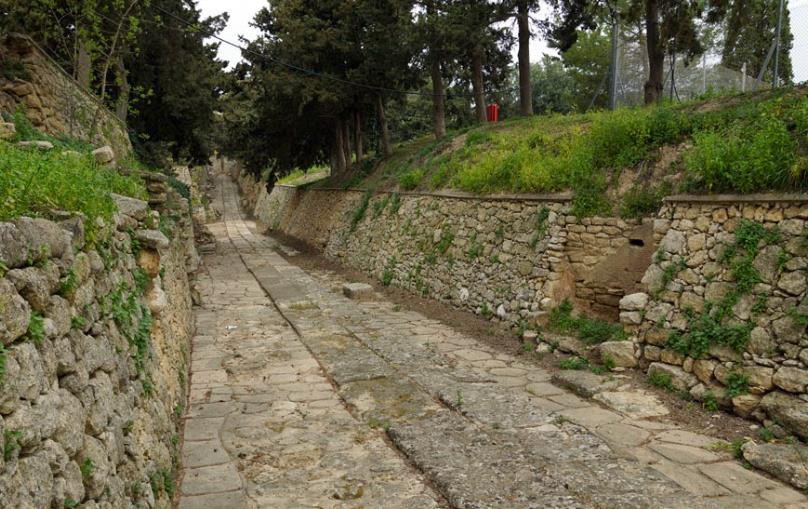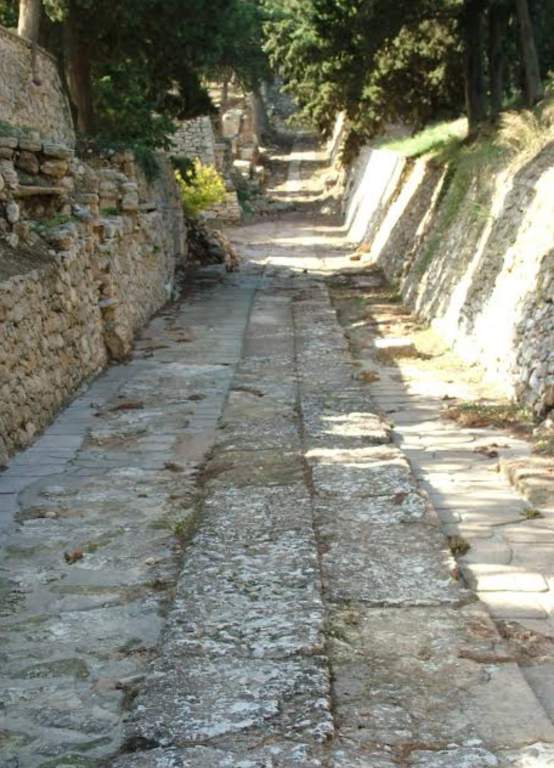The Minoan Highway was discovered in southern Crete, Greece. Excavations revealed a significant road that is thought to have linked the southern harbor of Kommos and the Minoan metropolis of Phaistos in the fifteenth century BC. The American School of Classical Studies in Athens is leading an excavation of Kommos under the direction of Toronto University professor Joseph W. Shaw, who described the limestone-paved route as “a stunning discovery that highlights the southern seaport’s strategic importance for the Minoan empire.”
The island of Crete served as the center of the Bronze Age Minoan civilization. It is frequently recognized as the earliest European civilization, and it is well-known for its imposing architecture and vibrant art. Popular tourist destinations are the Minoan palace ruins at Knossos and Phaistos.
The ruins of what Dr. Shaw thinks was a “kind of customhouse, a public facility where the Minoan sea captains would gather” are located next to the old road. He said that “enormous blocks, among the largest ever employed in Minoan construction,” make up the building’s standing wall. According to Dr. Shaw, the maritime Minoan empire used the ancient Kommos harbor, which is located five miles south of Phaistos and close to the well-known Matala caves, as a port of entry and a hub for trade with ancient Egypt and North Africa.
Dr. Shaw claims that the well-traveled path is about 10 feet wide, wide enough for four people to stroll side by side. He claimed that it went inland toward Phaistos and split apart the common homes from the affluent Kommos core neighborhood. Evans assumed there was a road. As early as 1924, Sir Arthur Evans, the archaeologist who uncovered the Palace of Knossos, the fabled residence of King Minos and the Minotaur, prophesied the existence of a town on the location of Kommos.
Sir Arthur, who also thought there was a great road, assumed that it connected Kommos and Knossos, running from the island’s southern to its northern beaches. Dr. Shaw stated that he thought the avenue went all the way to Phaistos, even though he had only found the road’s beginning. There is no proof that the excavation effort this summer goes all the way to Knossos. Minoan art consisted of brilliant frescoes, figurines, seals, and intricately adorned ceramics.
Dr. Shaw says it will take a year to completely study the vast amount of data that the Kommos excavations have revealed. When we start digging again in 1983, we hope to find Kommos’ downtown. What historians believe to have been a series of earthquakes around 1450 BC quickly destroyed the Minoan civilization, which had flourished in Crete during the Bronze Age.
It was around 3100 BC that the local Neolithic culture gave rise to the Minoan civilization, with the first sophisticated urban communities appearing around 2000 BC. They became part of the mainland Mycenaean Greeks’ cultural and possibly political dominance in approximately 1450 BC, creating a hybrid culture that persisted until roughly 1100 BC.
Read More: Carahunge: The Remarkable Stone Voice in Armenia

